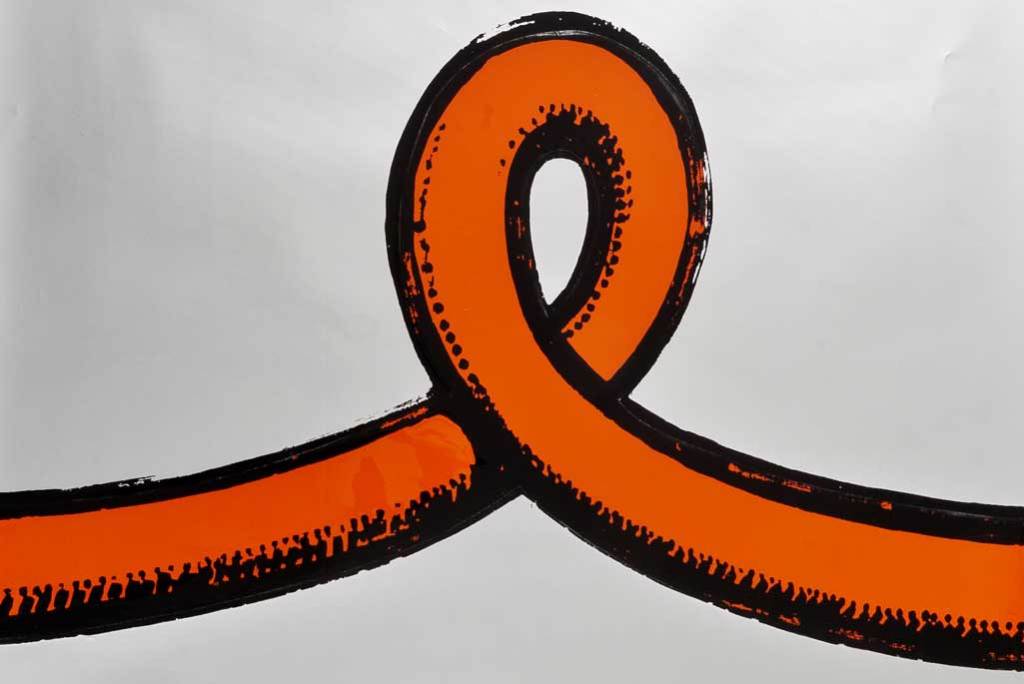Walking past a poster for ‘Australia’, the Royal Academy’s current show on Australian art in the UK, set me to thinking about the so-called ‘Larrikins’ – those talented Aussie dis-respecters of authority, snook-cockers, lateral dressers, shaggers and thinkers who moved to London in the 1960s.
Their country was a few dominoes closer to Vietnam, the ‘hot’ part of the Cold War against South Asian Communism waged principally by the USA and also Australia. So, their perspective was a little different to their co-linguists in the UK, who were protesting US involvement in Vietnam. They had usually taken the hippie-trail through India and Afghanistan to get here. They brought the spirituality, colour, food and symbolism with them.
They included the feminist author Germaine Greer, satirical zinester Richard Neville (who followed his beautiful girlfriend Louise Ferrier to GB) and psychedelic artist Martin Sharp. They were, in the language of Picasso’s biographer John Richardson, ‘vertical invaders’ – outsider-insiders with a different but related language, who had come to the ‘centre’ to escape the periphery and who subsequently transformed the centre. At first, their activities were largely focused on OZ − a beautiful Notting Hill-based counter-cultural ‘zine. Neville was the editor, Sharp the creative director and Ferrier and Greer were contributors and ‘faces’.
Sharp in particular fits this ‘Larrikin’ model of the impertinent outsider: in a relatively short period he became the oracle of psychedelic imagery who, along with four or so others, created a new ‘look’ for the fresh London clubs, music venues, bedsits and streetscape. His set of eight weird poster-prints that he created for Big O Posters stands out for me. They were sold at 40 shillings apiece via Print Mint’s outlet in Kensington and a little mail-order catalogue, inserted into an issue of OZ.
They are a departure from his usual-unusual psychedelic offerings for OZ, Big O Posters and groups like Cream. He called them ‘Smartiples’, perhaps as a comment on the popular English coloured chocolate drops available in a tube. He seemed to create these almost as an afterthought to his revolutionising of London’s graphic design landscape. I see them as a counter-cultural version of Picasso’s Demoiselles d’Avignon, an attempt by Sharp to go beyond what was expected of him, to stretch the psychedelic poster genre to breaking point and create a new visual language.
The images look like archetypal symbols drawn by psychiatric patients on LSD or Jungian analysands. They are big semi-transparent acrylic posters printed in églomise, made to be hung in front of lightboxes. This method of working on plastic in ‘commercial’ graphic art was in the air, but largely amongst the ‘pure’ Pop artists of London like Tilson and Hamilton. They are a big departure from the winning sales formulae of shiny paper posters with iconic rebellious figures, or sexy psychedelic motifs and neo-art-nouveau beauties for hippy-student bedsits or squats.
They are visual puns: a heart captioned All you need, Boo-Zoom (a breast); a UFO called Coming; a pneumatic ball called Float; a squiggle called Exclamation; a tumescent penis called Standing, The Flying Eye and a big question mark Wot!.
Some symbols do appear in his previous work, such as Wot!, which is an OZ cover, and The Flying Eye which resembles an eye in Sharp’s Dantalian’s Chariot poster for UFO at the Roundhouse. In essence, they were an exit from Sharp’s underground press illustrations and rock music/concert posters and so were unjustly overlooked. One year, hopefully soon, there will be a show of Australian artists in a national UK gallery that includes Martin Sharp on the poster for the show itself.





